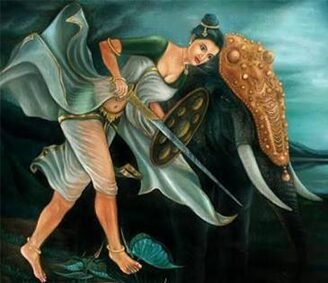Vishnu Purana: An Exploration of Hindu Cosmology and Mythology
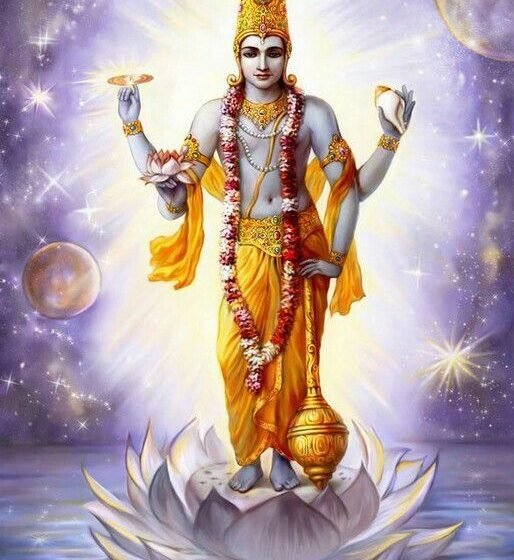
The Vishnu Purana is one of the eighteen Mahapuranas, a book of scriptures covering a wide range of subjects including mythology, theology, and history. Among these, the Vishnu Purana holds a significant place in Hindu cosmology due to its devotion to Vishnu, the protector and preserver of the universe. It is considered one of the most concise yet powerful Puranas, describing the glory of Vishnu, the stories surrounding his various avatars (incarnations), and the justice he administered. In addition to its religious significance, the text provides insight into ancient Indian culture, philosophy, and even cosmological philosophy, establishing its status as a religion and history.
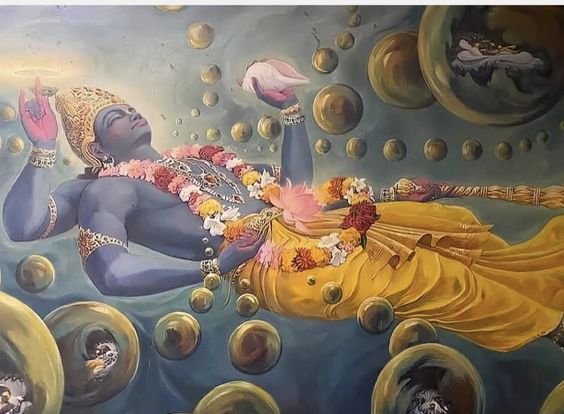
History
The composition date of Vishnu Purana is a rather debated and controversial topic. Rocher suggested that he found some references to Vishnu Purana in texts such as Brihadvishnu whose dates are better established and came to suggest that a version of Vishnu Purana existed by about 1000 CE but it is still difficult to point at the exact date of its composition. Vishnu Purana like all Puranas has a complicated chronology.
The text is written in metrical verse or sloka form, with each verse consisting of exactly 32 syllables, of which 16 syllables may be free form, as per the ancient script. Written in classical Sanskrit, the text is divided into six books (amsas) and covers various subjects such as cosmology, geography, genealogy of gods and goddesses, and spiritual practices. the Vishnu Purana continues to contribute to the growing prominence of Vaishnavism, a sect of Hinduism that centres on the worship of Vishnu as the supreme deity.

Mythology
Story of Krishna
The fifth part or canto of Vishnu purana tells us about the tales of Krishna as a naughty child and a brave warrior. It starts with telling of Krishna’s birth and his real and foster family. In Vishnu purana we find beautiful description of Krishnas Leela’s as a child as well as getting to see the role he played in Mahabharata. He is loved for his playful nature, mainly his love for stealing butter, earning him the nickname “Makhan Chor.” His childhood Leela’s additionally include outwitting demons despatched by Kamsa, like Putana, who tried to kill him. Krishna’s taming of the lethal serpent Kaliya and his playful interactions with the cowherd boys and gopis reflect his dual nature as both a loving, playful toddler and a divine protector, revealing his early manifestations of divine energy
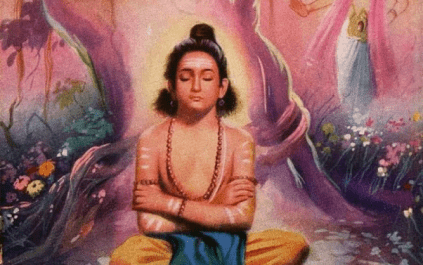
Story of Prahalad
Prahalad, the son of the demon king Hiranyakashipu, used to be a religious follower of Lord Vishnu, regardless of his father’s hatred for the god. Hiranyakashipu, angered his son’s devotion, subjected Prahalad to extreme punishments including attempts to kill him but Vishnu’s grace included and saved him every time. ultimately, Vishnu incarnated as Narasimha, in a half man half lion form, and killed Hiranyakashipu, demonstrating the triumph of excellent over evil and the energy of unwavering faith within the divine.
Dashavatar
The Dashavatars, or ten incarnations of Lord Vishnu, are important to Hindu and Vaishnav mythology, symbolizing his divine interventions to restore cosmic order. The first avatar, Matsya, is a fish that saved humanity during an exquisite flood. Matsya, the first avatar of Vishnu, represents a fish. In evolutionary terms, life on Earth is believed to have started in water, with the first organisms being aquatic. The second one, Kurma, is a tortoise who supported the churning of the ocean. The third, Varaha is a boar who rescued the Earth from the depths of the ocean. Narasimha, the fourth avatar, seemed as a half of-man, half of-lion who killed the demon, Hiranyakashipu. The fifth, Vamana, is a dwarf who subdued the king Bali. Parashurama, the sixth, is a warrior with an awl who punished corrupt kings. The seventh, Rama, represents an ideal ruler and hero. The eighth avatar, Krishna, is widely known for his expertise and miracles. Balarama, or once in a while Buddha, is the ninth. Eventually, Kalki (yet to come) will seem to stop the current age of darkness.
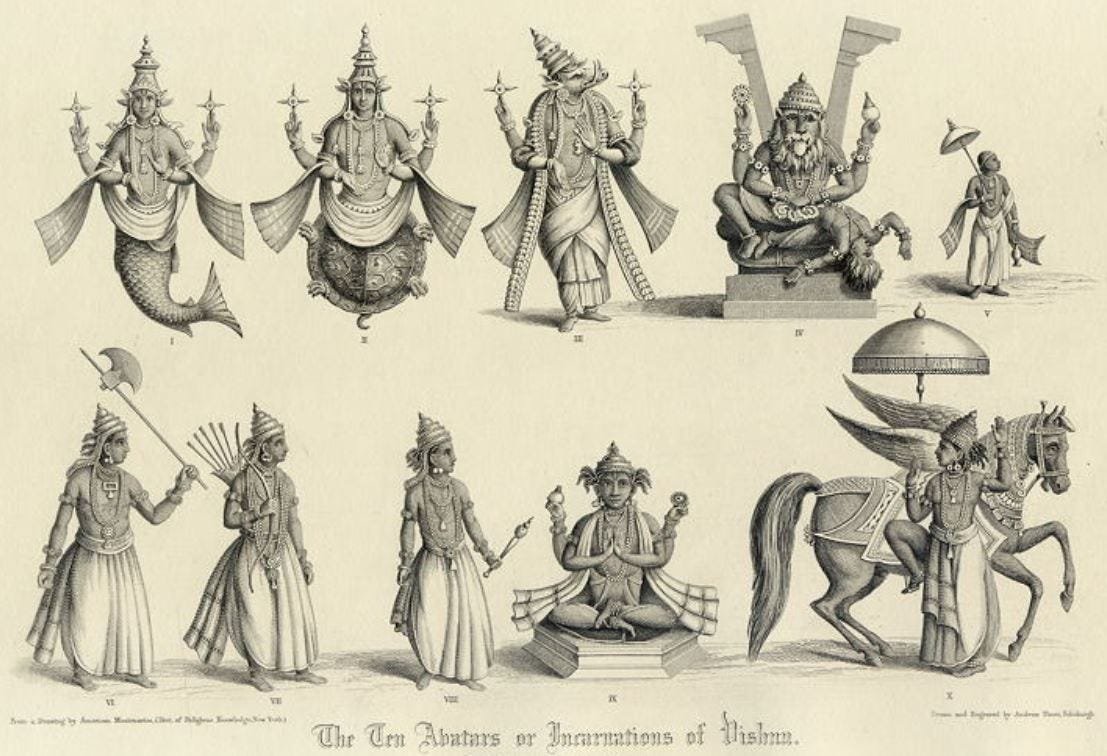
The Dashavatara’s interrelatedness with Charles Darwin’s theory of evolution
When examined through a modern lens, the Dashavatara shows striking parallels with Charles Darwin’s theory of evolution. Starting from the very beginning, Matsya, the first avatar of Vishnu, represents a fish. In evolutionary terms, life on Earth is believed to have started in water, with the first organisms being aquatic. According to Darwin the aquatic animals were followed by amphibians, creatures that could survive both on land and under water. Considering the second avatar of Vishnu, Kurma, or the tortoise, could be seen signifying the transition from aquatic life to amphibians, which could live both in water and on land. The third avatar was the one in which he killed Hiranyaksha as mentioned above, it was called Varaha. Varaha was a boar and boars are considered mammals that walk the land. According to evolutionary stages, the reptiles are followed by mammals so this presents us with two mirroring images.
When lord Vishnu took his fourth avatar to protect his devotee Prahalad, he took form of a half lion and half man. This avatar was known as Narsimha. It can be said that this avatar which is half a man and half an animal could be related to part of evolution that witnessed change from an animal to a man. Vamana or the fifth avatar looked very close to a human form but was a dwarf. the dwarf form reflects a stage in human evolution when early hominids began to evolve physical characteristics that distinguished them from their primate ancestors. Survival of the fittest is a very popular theory in science. Vishnu’s sixth avatar Parshurama reflects that. Parashurama, the warrior who wields an axe, represents the evolution of early humans who created and used tools for hunting and survival.
![]()
Beyond this point humans had developed physically but was kept developing for them was their psychological characteristics. Many devotees still refer to Rama who was the next incarnation as the ideal human being. Societies of humans had eventually learnt to separate right from wrong and had started developing morally as well. These two things feel almost connected because Rama was a morally righteous king. Krishna’s role in the Dashavatara signifies the development of human intelligence, philosophy, and spirituality. His teachings in the Bhagavad Gita reflect the evolution of human thought, reasoning, and consciousness. While Buddha, the ninth avatar, represents the evolution of human consciousness towards compassion, wisdom, and enlightenment. It is still difficult to draw parallels between Kalki avatar which is yet to take place and science that has already been constructed.
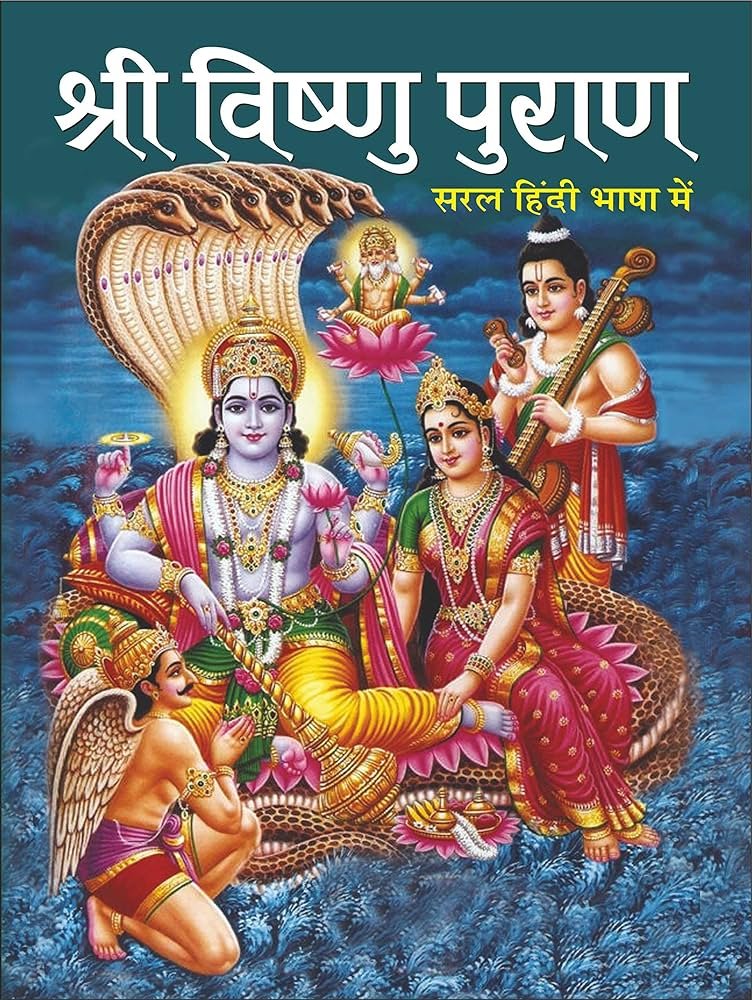
About Mahabharat
In the Vishnu Purana, Krishna is depicted as an incarnation of Lord Vishnu, embodying divine wisdom, love, and strategic power. He plays a pivotal role in the Mahabharata, serving as a friend, guide, and charioteer to Arjuna. His teachings impart profound philosophical and ethical guidance, addressing duty, righteousness, and devotion.
Worship
The first section of the sixth book claims that although Kali Yuga is cruel, violent, and full of evil that causes pain, “Kali Yuga is excellent” because it allows people to choose to follow Vishnu instead of joining the evil and so find salvation. The textual content discusses Yoga and meditation, as a way of Vishnu devotion. Bhakti in Vishnu Purana plays a big role, and is seen with purity and genuine devotion to Lord Vishnu. in the Vishnu Purana, Bhakti is portrayed because the purest shape of love and determination that an individual can specific closer to the divine. It emphasizes that through honest devotion and surrender to Vishnu, you will be able to achieve liberation (moksha), transcending the cycle of birth and dying. The Purana highlights diverse methods of expressing Bhakti, which include chanting his name, meditating for his divine form, doing rituals, and adhering to ethical virtues.
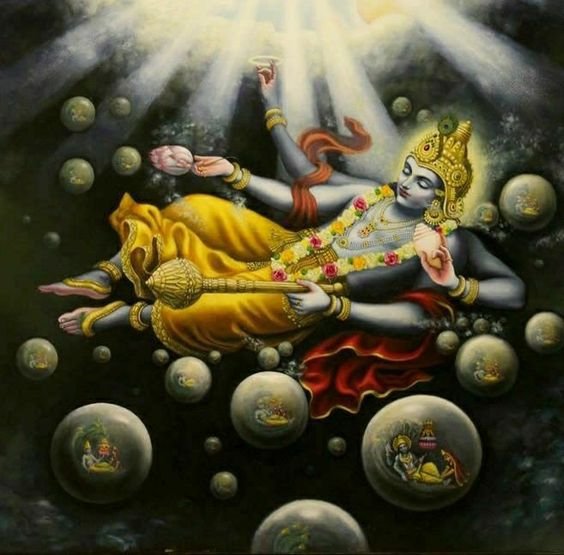
Legacy of Vishnu Purana
The Vishnu Purana has left a mark on Hindu philosophy and religious exercises. It played a key function in shaping the Vaishnava way of life, which regards Vishnu as the supreme being who incarnates in numerous forms in order to restore cosmic balance. Its impact is visible not only in religious world but additionally in the social sculpting of ancient and medieval India, in which the ethical teachings of the textual content had been incorporated into day-by-day existence.
Conclusion
The Vishnu Purana stands as a timeless piece of Hindu literature that encapsulates the essence of Vishnu’s role in maintaining cosmic order. Through its captivating mythological stories, spiritual teachings, and guidance for worship, it has shaped the beliefs and practices of countless generations. the Purana offers profound insights into the nature of the divine and the moral responsibilities of humans. As both a religious text and a historical document, the Vishnu Purana continues to inspire devotion, guide ethical behaviours, and provide a rich tapestry of stories that reflect the dynamic interplay between the divine and the earthly.
